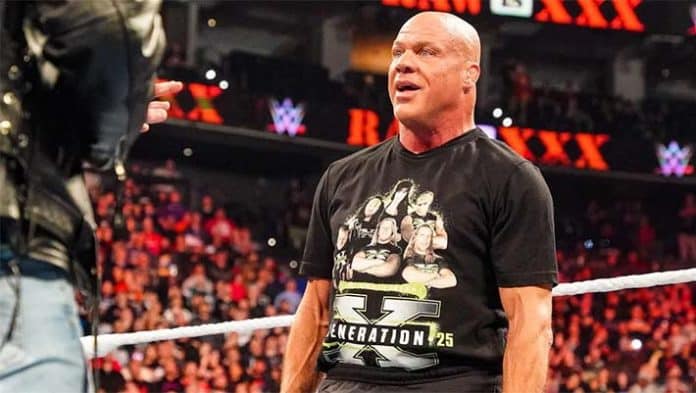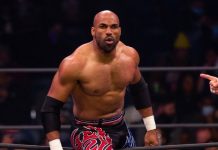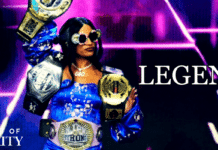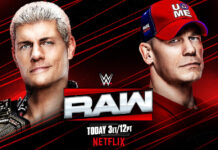
Today marks 23 years since the 2001 edition of The Royal Rumble, a pay-per-view that was held at The New Orleans Arena and kicked off a year that shaped the history of the industry. Just two weeks prior to this, Extreme Championship Wrestling ran its last official event with Guilty As Charged on pay-per-view, and WCW just finished up a calendar year that saw the organization lose a massive $60 million, setting the stage for Turner executive Jamie Kellner to cancel WCW programming. ECW ran a pair of bought house shows in Pine Bluff, Arkansas in mid-January before HHG Corp, the parent company of Extreme Championship Wrestling, filed for bankruptcy in March. Outside of the technicalities, January of 2001 saw the industry completely condense within a two-month span, ECW basically folded at the beginning of the year, and by Wrestlemania, the WWF was the only national promotion left standing.
Still, this edition of The Rumble had the ingredients of the boom period of the industry, even if that surge of popularity had to naturally begin to wind down with the lack of competition throughout the following year.
The show opened with Edge and Christian defending the tag titles against The Dudleys, and this was a prime example of the tag team peak that was a part of the fabric of the WWF in the early-2000s. As we know with traditional Rumble shows, the under card is often kept short to allow for time for the battle royal at the conclusion of the event, an aspect that was emphasized more during this era than the modern Rumble because of the time limits of traditional pay-per-view. So, this bout was given less than 10 minutes, but they made the most of it with a lot of fast-paced action, a trademark of the tag team division during this era. In something that you’d never see now, especially with the spotlight rightfully put on the dangers of head injuries, this narrative of this match was based on Bubba and D-Von suffering concussions from an attack on a previous episode of Smackdown. Again, it’s rather odd to hear the word concussion used in this context because wrestling promotions avoid the term at all costs now, even for legitimate head injuries.
After a series of near falls that created a lot of drama prior to the conclusion that kept the audience guessing as to who would be victorious, The Dudleys won the championship. This was a really good way to kickoff the pay-per-view and was a reminder of how key the tag team division was to provide an entertaining pace for PPV cards.
Chris Benoit defended the Intercontinental championship against Chris Jericho in a ladder match. Given how technically skilled these two were, I’m not sure a ladder match was really necessary, but this was very much an aspect of the times, when the car crash aspect of an event was stacked to secure those PPV dollars from the bigger audience that was drawn to the genre from the Attitude era. Benoit and Jericho didn’t shy away from the stipulations, as each took brutal bumps on the ladder. This went just under 20 minutes and was given the proper time to develop, a nod to the wise formatting of the card, because if you’re going to book a ladder match at The Royal Rumble, it has to be given enough time to be a ladder match or it will fall flat.
The infamous dive that Benoit made throw the ropes when he was smashed with a chair was one of the key points of his contest. This match also had the spot where Jericho put Benoit in the Walls of Jericho on top of the ladder. In retrospect and for obvious reasons, it’s tough to watch this again and see how many blows to the head Benoit took throughout the segment. Jericho climbed the ladder to claim the championship for the win.
On the other end of the spectrum, Ivory defeated Chyna to claim the Women’s championship during a segment that went just a few minutes. This was somewhat odd, particularly with how this angle played out, along with Chyna’s eventual exit from the organization. Chyna was booked for a storyline injury during this match, allowing Ivory to claim the championship. Since there wasn’t much for the actual contest, there’s really not anything to discuss, as the angle was the focus of the segment. As we know, Chyna “returned” from injury at Wrestlemania a few months later and regained the belt in a virtual squash match. She worked just one more match before she vacated the title and left the organization. So, maybe this injury angle was designed to set up some type of storyline with a build up for Wrestlemania, but given that it went nowhere after that, the entire situation was almost moot. That being said, it was definitely in bad taste that a neck injury angle was booked and Chyna was scripted to keep her arm frozen, implying some level of paralysis. Very similar to the concussion angle that was used as the narrative for the tag team title match, it’s really odds to watch a potential paralysis angle on WWE programming since you’d never see that type of storyline on WWE programming now.
The Triple H/Kurt Angle WWF title match was a very good quality main event bout. Everything they did was crisp and smooth, a credit to how much of an absolute nature he was in the squared circle, and the ability that Triple H had as a ring general, even in the early years of his main event push. Of course, the segment was overbooked with Trish and Stephanie getting into a scuffle before Vince McMahon was involved, but again, that was an aspect of the era so it didn’t really take away from the title match. Eventually, Kurt Angle got the win to retain the championship.
The Royal Rumble match itself was basically what you’d expect from a battle royal in terms of action, this this edition of the match had a few notable aspects. This was the year that Kane was really rejuvenated as a monster and he eliminated several wrestlers, adding a much needed level of credibility back to his character. Don’t get me wrong, Kane was one of the most consistent performers in the history of WWE and made the most of anything he was given, but it’s important to keep the status of his persona in context prior to this. When Kane burst onto the scene in late-1997, he was an unstoppable monster that had a tremendous mystic and an incredible presentation with his entrance. However, as time went on, for whatever reason, through his tag team with X-Pac and randomly being able to speak on the mic, his character was unintentionally watered down. His performances were still top notch, especially at this time, but the character had to be re-established. Thankfully, this performance helped solidify him as a force within the WWF landscape, a scene that was going to change very soon with the influx of WCW and ECW talent.
Drew Carey made his WWF in-ring debut in 2001 and eventually received at Hall of Fame induction for it. Granted this was silly and unnecessary, but considering that Carey eliminated himself from the match, this was no harm done to any of the performers that worked for the company on a weekly basis. Another cameo was The Honky Tonk Man, and in retrospect, with how much controversy he seems determined to create for himself, it’s even more surprising that he was brought back to the company for his appearence. He was eventually tossed by Kane, but it’s interesting to consider that this was the first cameo that was specifically based on nostalgia in the history of the Rumble. Sure, there were always guest stars, which is definitely part of the fun of the pay-per-view, but this was an occasion where the nostalgia card was played, simply because enough time had passed for The Honky Tonk Man to be considered a nostalgia act. As mentioned, it’s a really fun part of the event, but in more recent years, it seems like management has tried to keep the guest stars at a minimum, which might be the right decision on a long-term basis. In the mid-2010s, these cameos became a very anticipated portion of the Rumble, but as the years went on, the argument could be made that it might’ve been used too often so the fans began to gauge the quality of The Rumble match on the number of surprises, not the drama of potential eliminations to determine the challenger for the championship at Wrestlemania.
Stone Cold Steve Austin won his third Royal Rumble, setting up a second showdown with The Rock in what would become a memorable trilogy that that’d wrap up a few years later. The psychology of the finish was very well done, as Austin was actually attacked by Triple H before he entered the match and was bleeding during his stint in the contest. Kane was featured as the most dominate participant throughout the contest so Austin had odds to overcome and a monster to slay before he won the contest. Since this time period was such an influx for the business and quite frankly, there were more important narratives around the industry at this point, this particular Royal Rumble event probably doesn’t get as much discussion as it should, but this was a really solid pay-per-view.
What do you think? Share your thoughts, opinions, feedback, and anything else that was raised on Twitter @PWMania and Facebook.com/PWMania.
Until next week
-Jim LaMotta
E mail [email protected] | You can follow me on Instagram, Facebook, & Threads @jimlamotta89







